All about Pelargonium Toscana
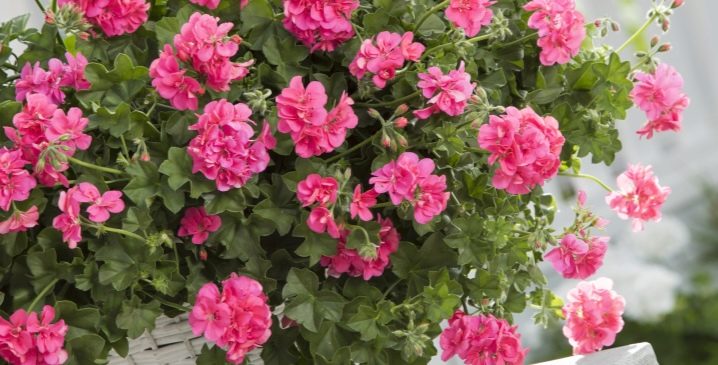
With the onset of the warm season, bright flower umbrellas of pelargonium are opened on the balconies and in the gardens to delight those around them with lush flowering and decorative leaves all summer long. A native of South Africa, the flower has long and firmly won the hearts of floriculture lovers.
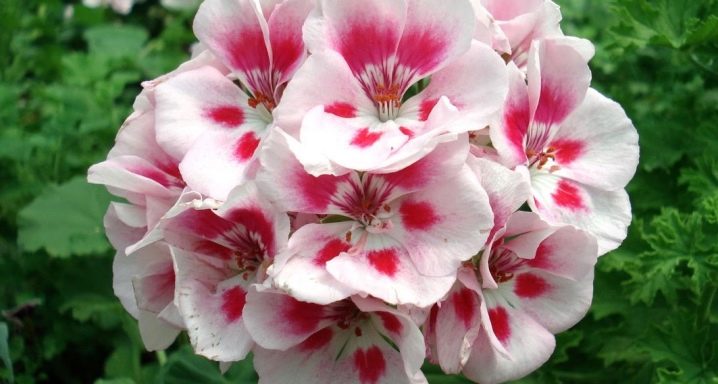
Peculiarities
Pelargonium is a decorative flower from the Geraniev family. To date, a description of about 250 species of this plant is known. Pelargonium is popularly called geranium, although this is scientifically incorrect. Plants belong to the same genus, but differ in appearance and have their own growing characteristics. Pelargonium, unlike geranium, is a thermophilic plant that does not hibernate in the open field. These two types of geraniums are united by the shape of a flower and a seed pod, similar to the beak of a crane, for which the flowers got their name (geranium in translation from Greek means "crane").
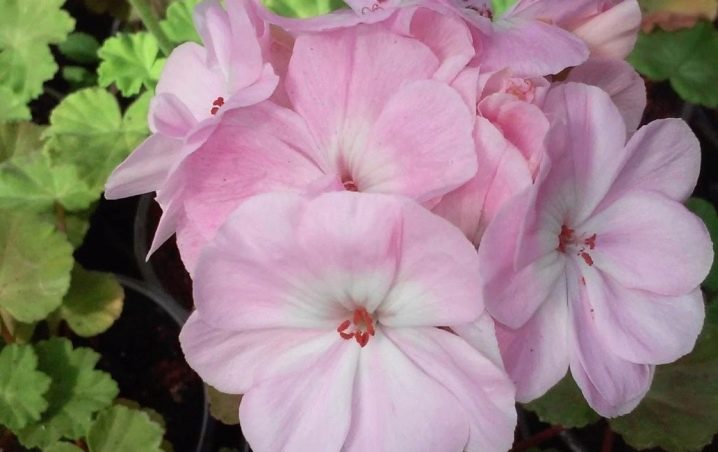
A perennial herb with an erect or creeping branchy stem is grown in mid-latitudes as an indoor plant, which in the warm season is taken out on a balcony or placed in a garden. Carved leaves are simple or dissected, with a velvety surface. Depending on the type of plant, the color of the leaves is monochromatic green or with pronounced alternating light and dark zones. Geranium species with leaves of varying color belong to the group of zonal pelargoniums.
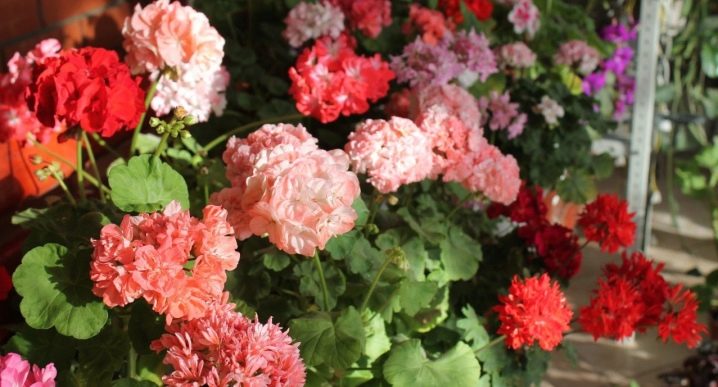
Umbrella inflorescences of pelargonium, collected from simple or double flowers, are distinguished by their bright color. Depending on the type of plant, the buds are solid or have several colors.
Due to the content of essential oils, geranium is used for medicinal and cosmetic purposes.
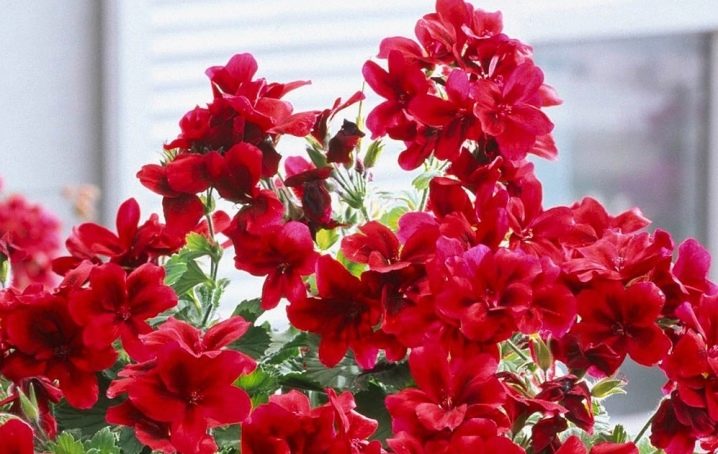
Varieties
Pelargoniums of any group have several series, differing in height, color and leaf shape. Flowers of the Toscana series are zonal. These short plants are characterized by the compactness of the bush, large umbrellas of the inflorescences and the duration of flowering for about a month. Pelargonium Toscana has several varieties that differ in the color of the buds.

- Toscana - a low, branched bush, decorated with very beautiful inflorescences up to 100 mm in diameter, in a semi-open form resembling a rosebud. Simple leaves of the plant have one dark ring located close to the leaf petiole.
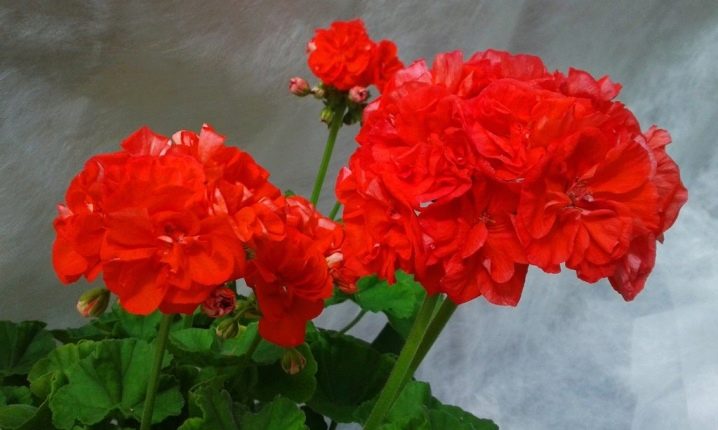
- Toscana Bernd - semi-double variety with red flowers that have a slightly brownish tint. From the middle of the bud, rare white stripes are scattered along the petals. When the flower begins to wilt, the edges of the petals lose color, as a result of which the inflorescence takes on a frosty appearance.
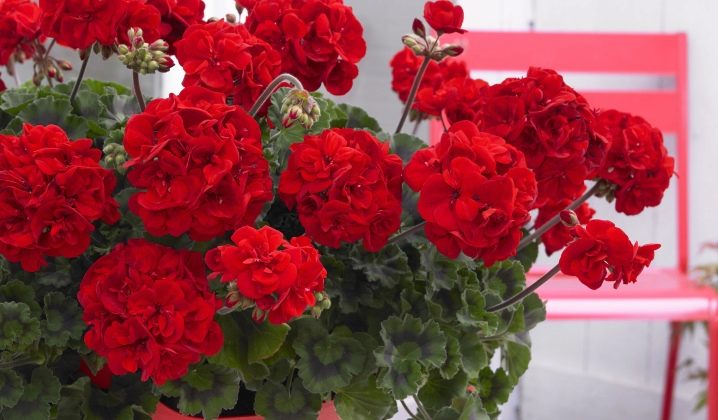
- Toscana edwards Is a terry variety with bright orange flowers. The underside of the petal is whitish in color. The plant has short, strong peduncles. Edwards blooms early and blooms profusely.

- Variety "Eric", or "Castello Orange", famous for its perfectly orange semi-double flowers among dark green foliage with a light zone in the center.
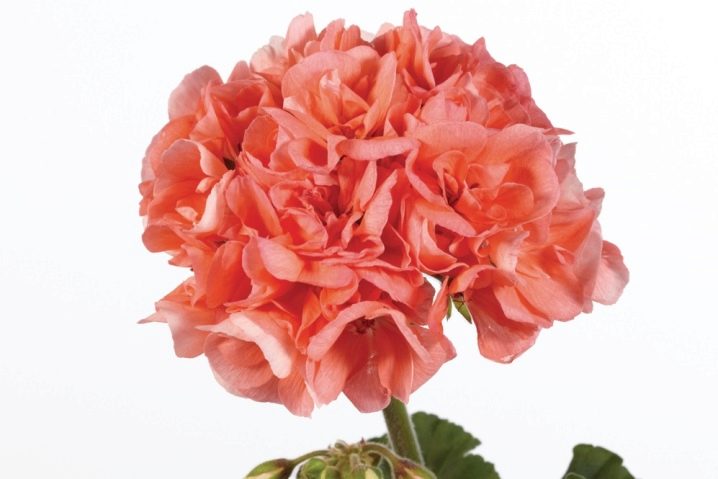
- Toscana hero - a dwarf plant with simple bright crimson flowers with a white eye in the center. Light green leaves have subtle dark areas.
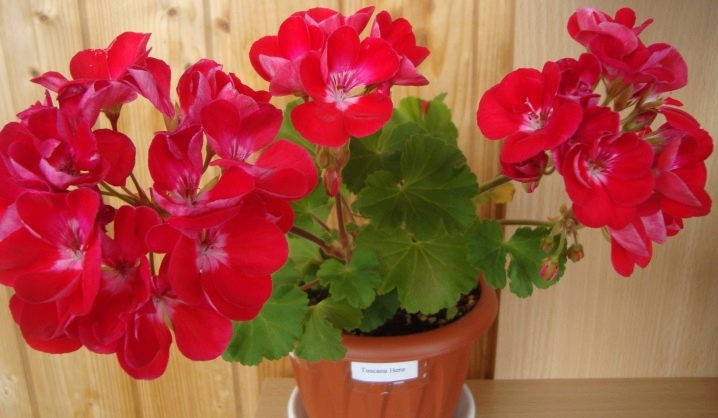
- Soft pink geranium "Karen" with simple flowers in lush inflorescences, towering over dark foliage, captivates with tenderness.
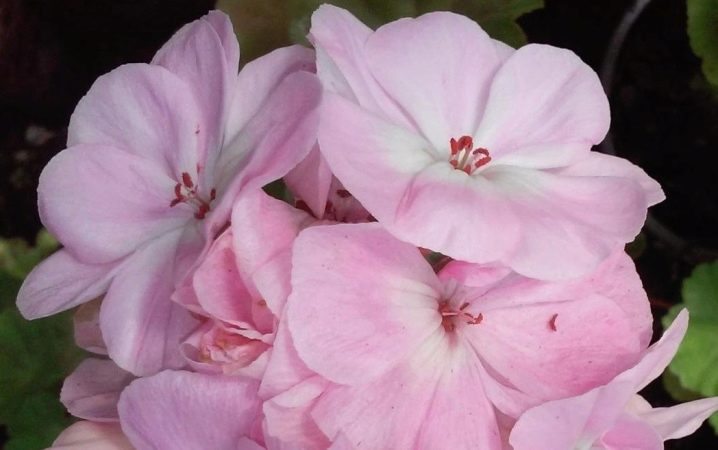
- Tammo - a compact dark green bush with a head of large inflorescences of simple fuchsia flowers with a dark red velvety spot in the center of the petal.
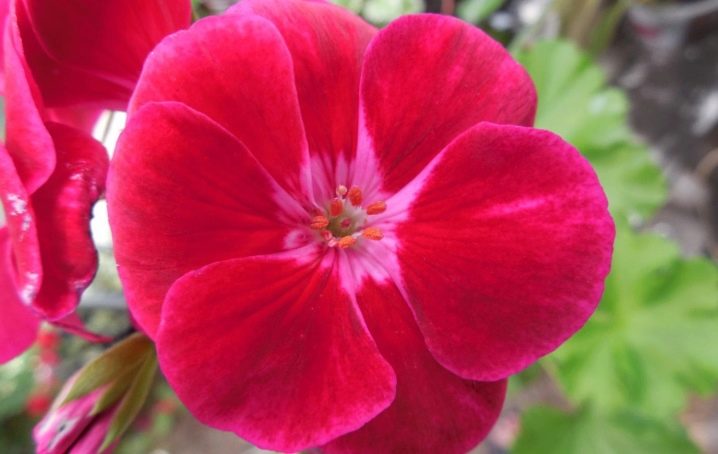
- Dolce vita lavender lara has large pink-lavender simple flowers with a bleached center.The green leaves of the plant have no distinct zones.

- Angeleyes amarillo burgundy refers to a hybrid derived from the compact royal Angeline variety. Flowers of this species resemble the shape of a pansy. Small green leaves are covered with a cap of small-flowered inflorescences of simple flowers the size of a five-ruble coin. The two upper large petals with a scalloped edge and the lower three smaller ones are burgundy with a delicate lilac edge. At the center, the petals are covered with a light mesh.
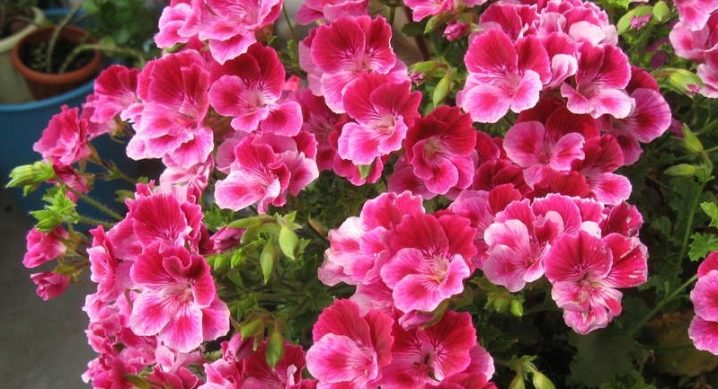
- Pelargonium Regina has large umbrellas of semi-double flowers, crimson with an orange center, rising above green leaves with a pronounced dark zone.
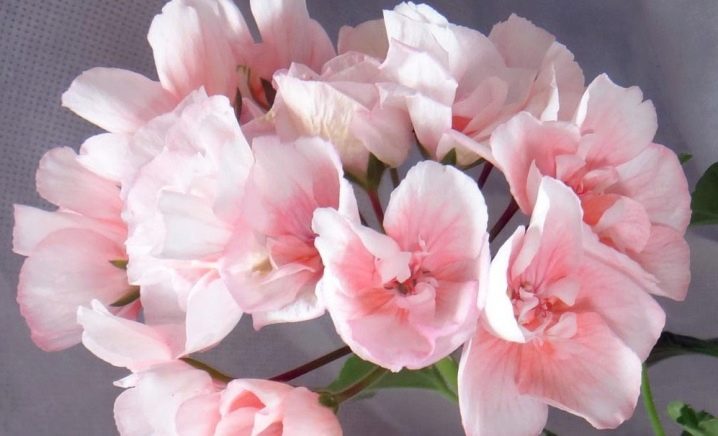
- Have Lenja large semi-double flowers of salmon color with a lighter border, collected in large spherical umbrellas.
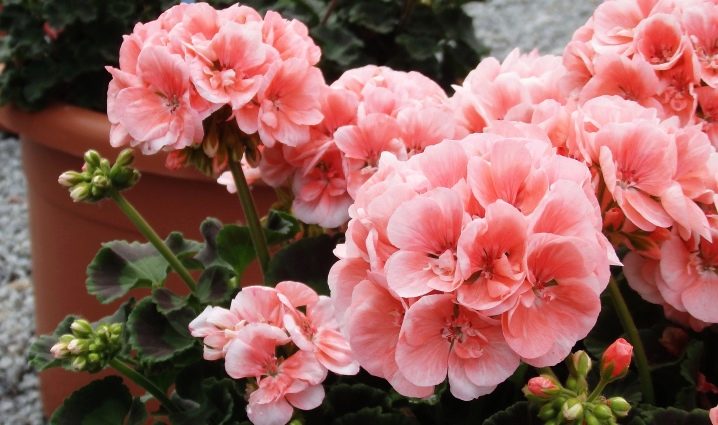
- "Katarina" - a compact plant with medium green foliage and a weak zone. A cap of large lilac flowers with a pink tint and a red center adorns the plant for about a month.
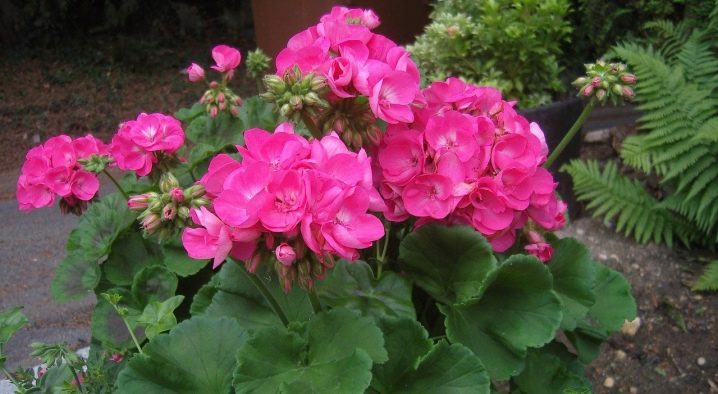
These varieties are most common among indoor florists and landscape designers who use these flowers in their compositions.
Basic rules of care
The basis for plant care is watering and feeding. A native of South Africa, Pelargonium is comfortable with some drought, but does not tolerate spraying and shower for flowers and leaves. It is necessary to water the flower in a pot with warm soft water so that only the top layer of the soil is moistened. Excess moisture is drained from the pallet, preventing water from stagnating.
In the hot season, daily watering is recommended, and when the plant enters the dormant period, the frequency of moisture is reduced to twice a week.
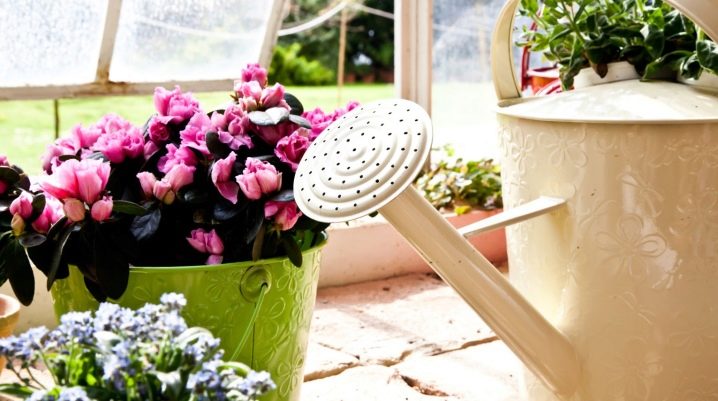
You can feed the flower with special fertilizers for flowering plants containing a minimum of nitrogen, since this element causes a rapid growth of green mass to the detriment of flowering. Organic fertilizers for geraniums are not recommended, but you can irrigate with an iodine solution by adding just one drop of the substance per liter of water... The liquid is poured over the edge of the pot so as not to burn the roots.
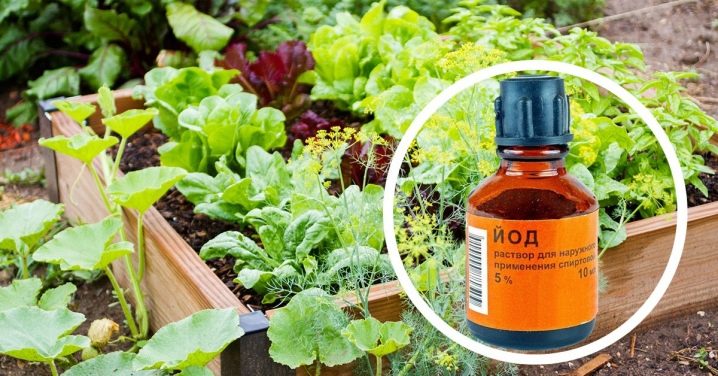
Geranium loves well-lit places where it needs to be protected only from the bright midday sun. Due to the lack of light, the zonal pelargonium loses its brightness, the leaves become monochromatic, the stems stretch out. The best daylight hours for long and lush flowering are 12-14 hours.
In winter, additional lighting can be used to preserve the decorative effect of the flower.
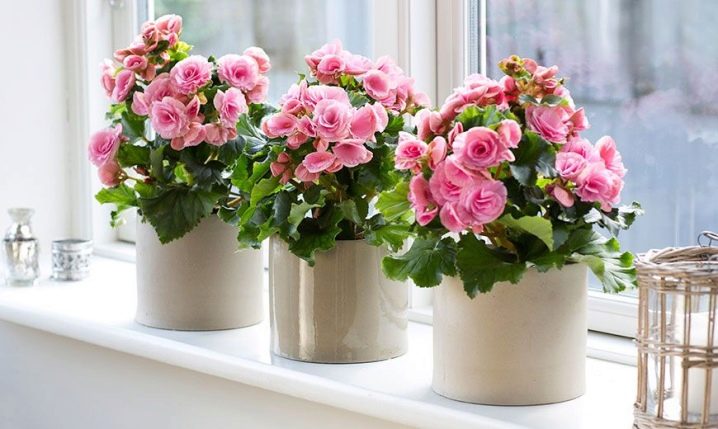
In the fall, when the flowering is over, and in early spring, the geranium is cut to form a bush. A feature of the flower is that in the process of growth, the lower leaves constantly die off, because of which the plant stretches out, and the bush becomes loose and ugly. You can trim to the desired height, even if bare stems remain. They have dormant buds, which, after pruning, will begin to develop, giving new shoots.
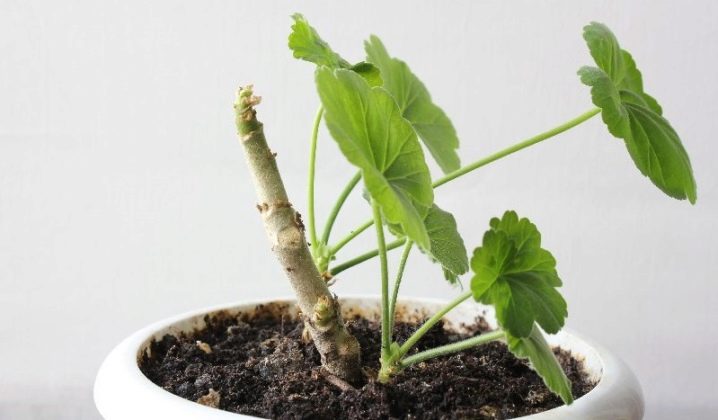
Diseases and pests
Even such an unpretentious plant is affected by pests and fungal diseases. In order to protect the plant from disease, it is necessary to observe the watering regime, preventing powdery mildew, rust or gray rot from developing.
If signs of disease appear, the plant must be treated with fungicides. If the flower is affected by a black leg, the flower will have to be destroyed completely, and the container must be disinfected.
Pelargonium has medicinal properties and repels the bulk of pests, but some sucking insects (such as whiteflies or spider mites) can attack the plant. To combat them, insecticides are used.
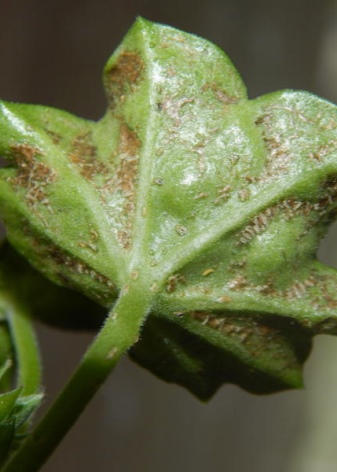
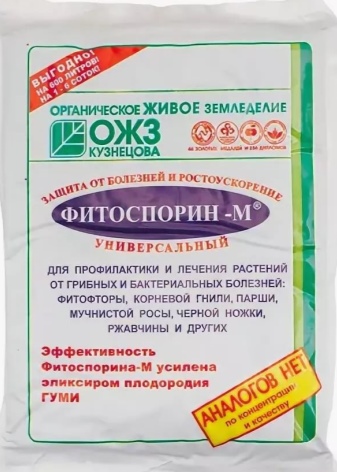
Reproduction
You can get new plants:
- sowing seeds;
- by rooting the cuttings.
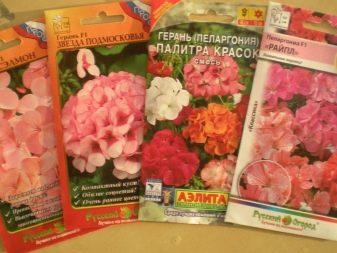

When propagated by seeds, especially those obtained at home, it is possible to get completely different plants, different from the mother. Therefore, it is better to use seed grains purchased from specialized stores. Sowing for seedlings is carried out in the second - third month of winter:
- seeds are distributed over the surface of the wet soil, sprinkled with a thin layer of earth;
- cover with foil and put in a warm, bright place;
- shoots will appear in a week;
- when the seedling has two real leaves, they are dived one at a time - two seedlings in a pot;
- when 5–6 leaves appear, the first pinching is performed.
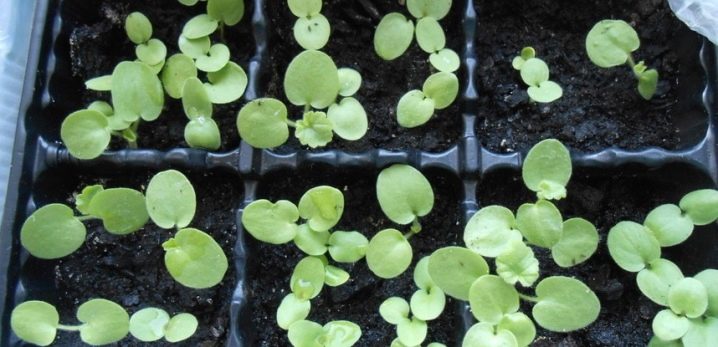
For reproduction, you can take the twigs obtained when cutting a flower, or cut off specially cuttings with a length of 2.5 cm. Dry the cut site and sprinkle with root growth stimulants. Plant the prepared cuttings in damp ground and leave uncovered. With regular watering and an air temperature of about 21 ° C, rooting occurs within 2-3 weeks. When the sprout produces five leaves, you need to pinch the top of the head.
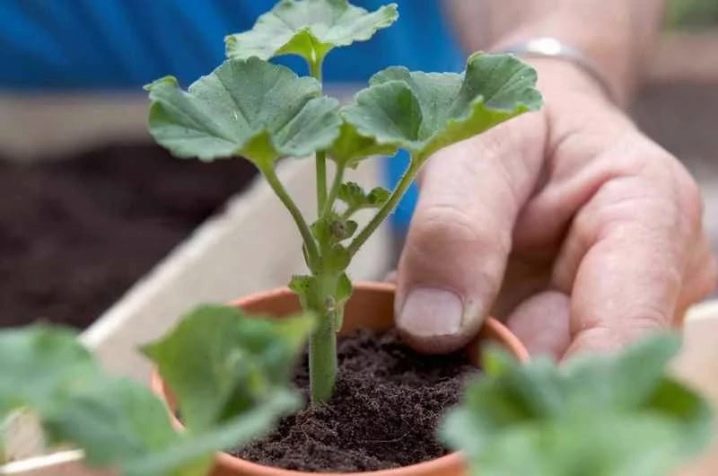
If you follow these simple rules of care, then pelargonium will thank you with lush long flowering.
You can find out more about growing Pelargonium in the next video.































The comment was sent successfully.